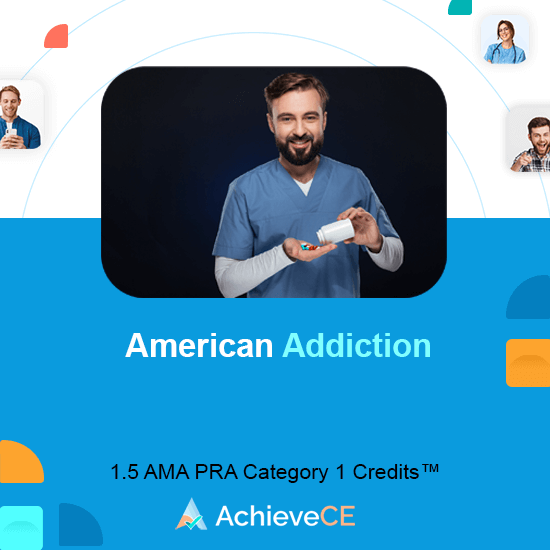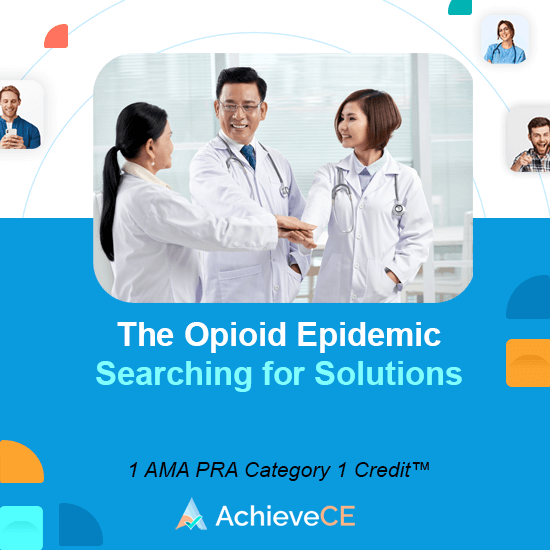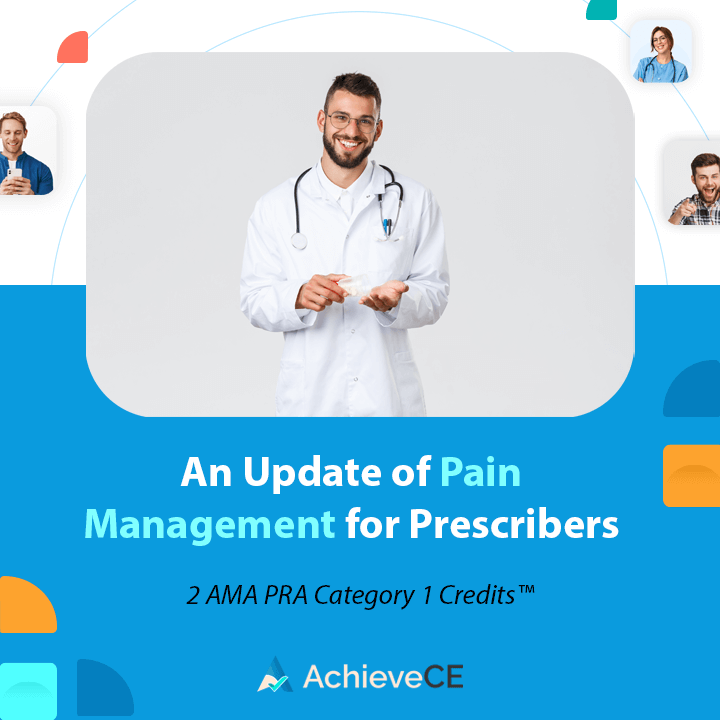Pennsylvania CME Requirements and CME Courses
1 - 8 of 8 results
A Guide to the Secrets of Never-Sued Physicians
A Guide to the Secrets of Never-Sued Physicians will help you to:
• Utilize the behaviors of never-sued physicians and incorporate them into daily practice;
• Refrain from using specific physician behaviors that precipitate lawsuits;
• Recognize potentially litigious patients and put into practice methods for dealing with them
• Practice medicine in a way that is consistent with recognized ethical principles.Meets Special CME Requirements in Connecticut, Massachusetts, Nevada, Pennsylvania, Rhode Island and Texas.
Target Audience: Physicians focusing on Risk Management.
See full details chevron_right- Cost: $25 per credit
- Credit hours: 4
- CME credits awarded by: University of Arizona College of Medicine at the Arizona Health Sciences Center
- Format: On-Demand Online
Preventing and Responding to Medical Errors
Preventing and Responding to Medical Errors will help you to:
• Recognize how root causes and other factors contribute to errors and medical adverse events;
• Understand the difference between active and latent causes of medical adverse events;
• Manage your ethical obligation to promptly and openly disclose a medical error to a patient and their family;
• Develop ongoing patient safety improvement efforts based on national standards and guidelinesMeets Special CME Requirements in Connecticut, Florida, Massachusetts, Nevada, Pennsylvania, Rhode Island and Texas.
Target Audience: Physicians focusing on Medical Errors
See full details chevron_right- Cost: $25 per credit
- Credit hours: 3
- CME credits awarded by: Office of Continuing Education, School of Medicine, University of Missouri-Columbia
- Format: On-Demand Online
Risk Management and the Art of Medicine
Risk Management and the Art of Medicine will help you to:
• Identify physician behaviors that lead to malpractice lawsuits;
• Explain the four elements required to prove a claim of medical malpractice;
• Incorporate strategies you can use to reduce your malpractice risk; and
• Practice medicine in a way that is consistent with recognized ethical principles.Meets Special CME Requirements in Connecticut, Massachusetts, Pennsylvania, Rhode Island and Texas.
Target Audience: Physicians focusing on Risk Management
See full details chevron_right- Cost: $25 per credit
- Credit hours: 3
- CME credits awarded by: University of Arizona College of Medicine at the Arizona Health Sciences Center
- Format: On-Demand Online
The Human Side of Medical Errors
The Human Side of Medical Errors will help you to:
• Deal with complex ethical issues that arise when caring for colleagues;
• Share bad news with patients or families compassionately and effectively;
• Participate in safe and efficient patient handoffs with other healthcare providers; and
• Recognize and respond appropriately to disruptive behavior that is endangering patient safety within the health care team.Meets Special CME Requirements inConnecticut, Florida, Massachusetts, Nevada, Pennsylvania, Rhode Island and Texas.
Target Audience: Physicians focusing on Risk Management.
See full details chevron_right- Cost: $25 per credit
- Credit hours: 2
- CME credits awarded by: Office of Continuing Education, School of Medicine, University of Missouri-Columbia
- Format: On-Demand Online
Using Systematic Procedures to Prevent Medical Errors
Using Systematic Procedures to Prevent Medical Errors will help you to:
• Use standardized procedures and checklists to reduce medical errors;
• Manage informed consent;
• Utilize rapid response teams; and
• Better approach communication difficulties.Meets Special CME Requirements in Connecticut, Florida, Massachusetts, Nevada, Pennsylvania, Rhode Island and Texas.
Target Audience: Physicians focusing on Medical Errors.
See full details chevron_right- Cost: $25 per credit
- Credit hours: 2
- CME credits awarded by: Office of Continuing Education, School of Medicine, University of Missouri-Columbia
- Format: On-Demand Online
AchieveCE American Addiction
Every 7 minutes in our country, a person dies from a drug overdose, while a child is also born approximately every 30 minutes dependent on opioids. How do we as healthcare professionals offer non-stigmatic patient care and contribute to the progress of society in the right direction? Substance use disorder (addiction) is likened to an iceberg or a weed, in that the issues underneath the surface are typically even more complicated than what is viewed from the surface. Addiction spans hundreds of substances of abuse highlighted by stimulants (cocaine and methamphetamine), cannabis (plant, synthetics, and extracts), and opioids (heroin, fentanyl, and carfentanyl). As one can recall with the substance of ethyl alcohol (i.e. beer, wine, and hard liquor), a substance may never actually chemically change, yet can move across legal classifications of substances, leaving all healthcare professionals in need of knowledge on all substances of abuse. Opioid use disorder (opioid addiction) is combated with the medication-assisted treatments (MAT) of naltrexone, methadone, and buprenorphine, while opioid overdose respiratory depression is reversed with naloxone. Over the course of this activity, we will aim for “higher” education on all of these dynamic aspects. Unlike opioids, this activity is sure to open your eyes and possibly even elevate your blood pressure and/or heart rate!!!
See full details chevron_right- Cost: $20
- Credit hours: 1.5
- CME credits awarded by: 1 AMA PRA Category 1 Credit™ by Continuing Education Company, Inc. and AchieveCE, ACPE, AGD PACE, and ANCC.
- Format: Online Video
AchieveCE The Opioid Epidemic: Searching for Solutions Webcast
According to the 2015 National Survey on Drug Use and Health, approximately 3.8 million people (1.4% of those ages 12 or older) reported misusing prescription pain relievers, while another 329,000 people reported using heroin. Within the same year, 52,404 lethal overdoses took place, making drug overdose the leading cause of accidental death within the United States. Stancliff et al estimated that as of 2012, approximately 80% of people dependent on heroin or prescription opioids were not engaged in any treatment and many in treatment do not use the most effective medication-assisted treatments available to them.
Despite recent increased awareness of opioid use disorder (OUD) and efforts to improve access to care, several barriers to treatment still exist, including financial, geographic, regulatory, and social. In 2012, only 2.2% of physicians in the United States obtained waivers to prescribe buprenorphine for the treatment of OUD. Of those who received waivers, 41.6% were psychiatrists. This may be perceived as a potential barrier to OUD treatment as patients are often resistant to referrals to psychiatric and/or addiction clinics given the stigmas commonly surrounding addiction and mental health. Furthermore, physicians with waivers were found to practice primarily in urban settings, leaving a large portion of the rural population without access to buprenorphine treatment.
With all this in mind, education is needed in regards to current and emerging treatment options for OUD available to multiple patient populations. Also, with the deaths due to drug overdoses still elevated, education on how to recognize and reverse an opioid overdose is needed.
This presentation will address the above needs by discussing the science behind opioid use disorder as well as reflect upon current statistics associated with its impact on the United States. During the discussion, opioid overdose risks will be discussed and participants will be able to practice recognizing key symptoms of an overdose situation. Steps of using naloxone will be discussed and connected to how to appropriately seek out treatment for maintenance of opioid use disorder. Finally, new buprenorphine products and the potential role of naltrexone will be applied to this stigmatized population.
See full details chevron_right- Cost: $15
- Credit hours: 1
- CME credits awarded by: Continuing Education Company, Inc. and AchieveCE, ACPE, AGD PACE, and ANCC
- Format: Online Video
AchieveCE An Update on Pain Management Drugs for Prescribers
This course provides 2 AMA PRA Category 1 Credit for license renewal and talks about the pharmacology, adverse effects, dosage, and administration of FDA-approved treatments for acute pain like nonopioid analgesics, adjuvant pain medications, migraine medicines, Tramadol/Celecoxib (Seglentis), Bupivacaine/Meloxicam (Zynrelef), IV Meloxicam (Anjeso), and Benzhydrocodone/Acetaminophen (Apadaz).
See full details chevron_right- Cost: $24
- Credit hours: 2
- CME credits awarded by: The Medical Letter and AchieveCE
- Format: On-Demand Online








